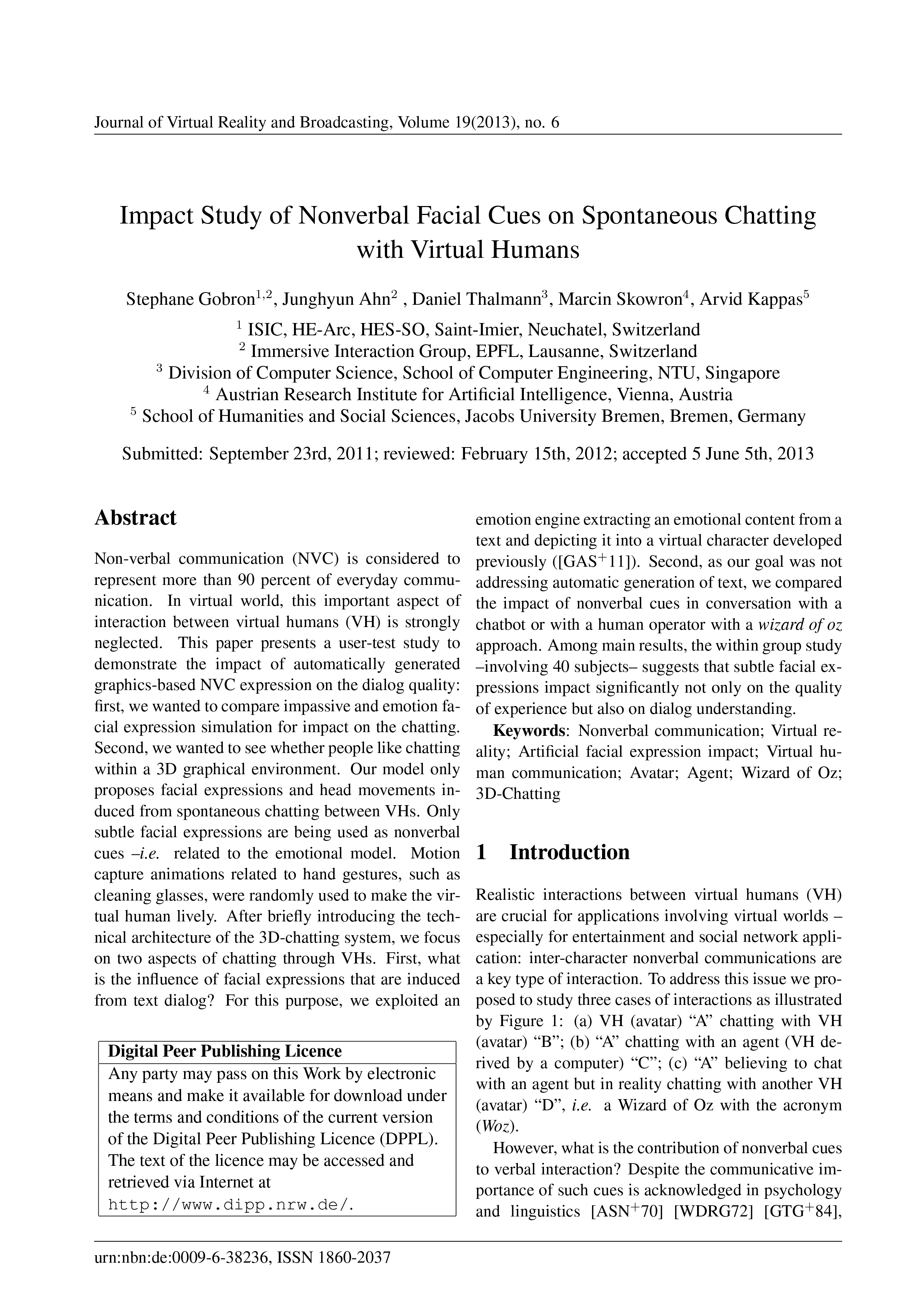Impact Study of Nonverbal Facial Cues on Spontaneous Chatting with Virtual Humans
DOI:
https://doi.org/10.20385/1860-2037/10.2013.6Keywords:
3D-Chatting, Virtual Reality, Wizard of Oz, agent, artificial facial expression impact, avatar, non-verbal communication, virtual human communicationAbstract
Non-verbal communication (NVC) is considered to represent more than 90 percent of everyday communication. In virtual world, this important aspect of interaction between virtual humans (VH) is strongly neglected. This paper presents a user-test study to demonstrate the impact of automatically generated graphics-based NVC expression on the dialog quality: first, we wanted to compare impassive and emotion facial expression simulation for impact on the chatting. Second, we wanted to see whether people like chatting within a 3D graphical environment. Our model only proposes facial expressions and head movements induced from spontaneous chatting between VHs. Only subtle facial expressions are being used as nonverbal cues - i.e. related to the emotional model. Motion capture animations related to hand gestures, such as cleaning glasses, were randomly used to make the virtual human lively. After briefly introducing the technical architecture of the 3D-chatting system, we focus on two aspects of chatting through VHs. First, what is the influence of facial expressions that are induced from text dialog? For this purpose, we exploited an emotion engine extracting an emotional content from a text and depicting it into a virtual character developed previously [GAS11]. Second, as our goal was not addressing automatic generation of text, we compared the impact of nonverbal cues in conversation with a chatbot or with a human operator with a wizard of oz approach. Among main results, the within group study -involving 40 subjects- suggests that subtle facial expressions impact significantly not only on the quality of experience but also on dialog understanding.
Published
2013-12-20
Issue
Section
Articles





